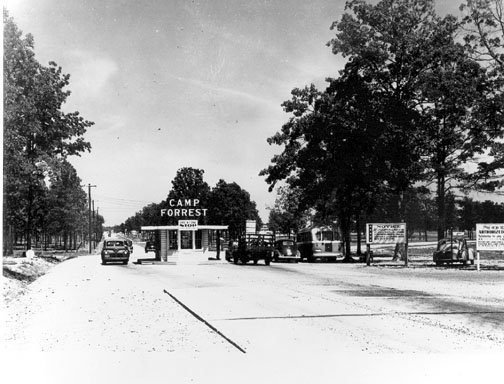
TULLAHOMA — It once included 1,300 buildings, 55 miles of roads, five miles of railroad tracks, and existed as a self-sustaining city of over 70,000 soldiers and another 12,000 civilians. Originally built in 1926 near Tullahoma as a National Guard Camp, Camp Forrest served as a crucial induction and training site during World War II. . Today, only a few overgrown concrete foundations remain. To learn more, visit campforrest.com.
During the month of March, the Tullahoma Art Center will share their private archived collection of pieces pertaining to Camp Forrest. The large exhibition will hang in three exhibit halls inside the center through March 31.
In its heyday, Camp Forrest covered nearly 85,000 acres on land that now serves as the footprint of Arnold Engineering Development Complex (AEDC). It housed service clubs, guest houses, a library, post exchanges, a post office, hospital, chapel, a movie theater, and barracks. Major General George Patton once brought his famed 2nd Armored Division from Fort Benning, to practice maneuvers at Camp Forrest. It’s estimated that its mere existence increased the size of Tullahoma by as much as 40 percent.
The Tullahoma Art Center is located at 401 South Jackson Street. Learn more about upcoming shows by visiting their website. You can also get updates at their Facebook page by clicking here. •
{The Lynchburg Times is an independently owned and operated newspaper that publishes new stories every morning. Covering Metro Moore County government, Jack Daniel’s Distillery, Nearest Green Distillery, Tims Ford State Park, Motlow State Community College, Moore County High School, Moore County Middle School, Lynchburg Elementary, Raider Sports, plus regional and state news.}
